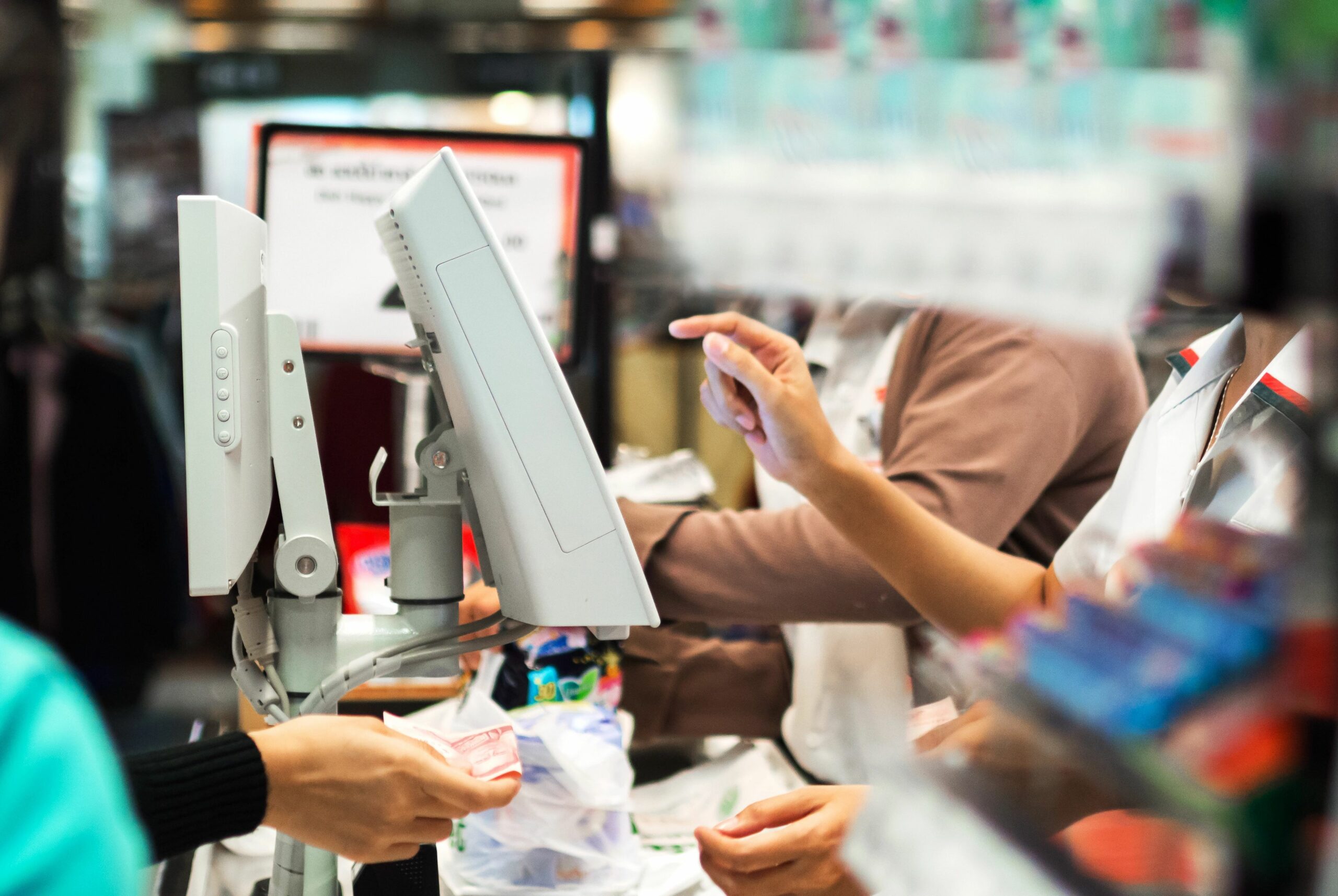
cookiecutter/Depositphotos.com
July 8, 2025
Should Retailers Reveal Algorithmic Pricing Schemes?
The National Retail Federation (NRF) filed a lawsuit to block the implementation of a New York state law, set to take effect on July 8, requiring retailers to tell customers that they use algorithmic pricing.
The law — which was passed with little debate as part of the state’s budget bill, and signed by Governor Kathy Hochul on May 9 — requires any retailer that sets prices using virtually any information about its customers to place a disclosure next to each affected product saying, “This price was set by an algorithm using your personal data.”
In the May statement, Hochul pointed out the consumer risks of increasingly sharing information like browsing behavior, location, and purchase history in today’s marketplace.
“Today’s technology means corporations are able to collect mountains of personal data, feed it into algorithms, and generate a price that’s individual to a consumer,” said Hochul. “This practice, which the FTC has dubbed surveillance pricing, means a company could be charging you and your neighbor different prices for the same product, based on your individual willingness to pay. This practice is opaque and strips consumers of their ability to comparison shop and plan for the price of goods and services.”
Hochul said it’s “first-in-the-nation legislation that requires businesses to disclose clearly” to consumers when a price was set by an algorithm using their personal data, subject to certain exceptions.
NRF Argues That Algorithmic Pricing Could Actually Drive Prices Down
In its lawsuit, the NRF argued that grocers have long offered coupons at checkout for items similar to those purchased, and that coffee shops have offered rewards cards giving repeat customers every tenth cup free.
The suit noted that an online merchant might offer a promotion to a customer who leaves a product in an online shopping cart for a number of days, then change it based “on what competitors charge, seasonal price adjustments, or intuition.” Using algorithmic pricing, “[Merchants] simply do it with greater sophistication and on a much-larger scale,” the suit stated.
The suit further cited studies showing that algorithmic pricing based on market conditions has proven to be a “powerful role in driving prices down” because it allows firms to be more responsive to supply and demand.
NRF’s complaint said, “Despite this, the State of New York will soon require many retailers to affix a misleading and ominous warning to any price set by an algorithm using any information that could be linked to a customer… Although the state is free to express its opinion that algorithmic pricing is dangerous, it cannot force businesses that disagree to do so.”
A Gartner survey from October 2024 found 68% of consumers feel taken advantage of when brands use dynamic pricing, 80% agreed that brands that have consistent pricing are more trustworthy, and 42% would be willing to spend more on a product if consistent pricing was guaranteed.
Discussion Questions
Would stating explicitly that algorithms are driving online pricing be positive or negative for retailers?
Do you agree that “charging you and your neighbor different prices for the same product” is common and a negative side effect for consumers around algorithmic pricing?
Poll
BrainTrust
Georganne Bender
Principal, KIZER & BENDER Speaking
John Hennessy
Retail and Brand Technology Tailor
Bob Amster
Principal, Retail Technology Group
Recent Discussions







I think we’re getting a little paranoid here: the idea that a person A will pay a different price than person B standing next to them independent of that customer doing something overt (like giving a code or providing add’l information) impresses me as the exception rather than the rule (if it occurs at all); most algorithms still work on aggregated data. That having been said it’s obvious to most everyone that the concept works against pricing transparency, and is unpopular (recall it was mentioned in that NYC candiate’s ads). While retailers can complain all they like about the reg, they need to realize it likely reflects popular sentiment. Price tailor at your peril!
Google is now paying $300 to $500 per hour for doing work online work from home. Last paycheck of me said that $20537 from this easy and simple job. Its amazing and earns are awesome. No boss, full time freedom and earnings are in front of you. This job is just awesome. Every person can makes income online with google easily….
.
More Details For Us→→→→ https://tinyurl.com/mr8pnsb6
The NRF’s claim that algorithmic pricing is merely “sophisticated couponing” overlooks a key issue: the difference between targeted promotions and charging different prices to neighbors for identical products based on behavioral profiling. The former adds value, while the latter extracts it. Differential pricing creates a negative consumer experience, as algorithms use personal data to assess “willingness to pay,” venturing into Shoshana Zuboff’s concept of surveillance capitalism, extracting value rather than creating it.
The good news is, retailers have a strategic opportunity: consumer trust is now a crucial resource. Gartner data indicates that 80% of consumers value pricing consistency, signaling a market need. Innovative retailers should embrace transparency as a competitive advantage, possibly through “algorithm-free pricing” campaigns or explicit data partnerships that allow customers to choose their desired level of personalization. Retailers who focus on customer-controlled personalization are likely to find that it outperforms algorithm-driven approaches, as trust leads to higher-quality signals and a boost to the brand.
The real choice is between extraction and partnership, and retailers who grasp this will lead the next phase of digital commerce.
We need to be careful with the terms. Algorithmic pricing is simply using algorithms to set prices. It is pretty common and is used in a lot of industries like travel, including on Uber, where it helps to balance supply and demand. Changing prices from individual to individual is personalized pricing. I don’t think retailers should be forced to reveal this, or more general algorithmic pricing. However, I do think personalized pricing in general retail is bad practice and it will lead to an erosion of loyalty and trust. In that sense, it is self-regulating.
Or dynamic pricing.Or disastrous pricing.
Oh! I didn’t realize this was just another term for dynamic pricing. The first time I’m sitting next to someone and we’re served up different prices for an item is the last time I will shop at that retailer.
But you will stop shopping that establishment only if you FIND OUT the you were charged differently…and you may have been charged less…
See my response to Gene. As you might suspect, I have strong opinions on this topic and have had them for 20 years (that’s how long this fantasy has been lurking around).
Even if your “differnet price” is less than the other shopper’s? Won’t you smile and return, thinking you have hit the jackpot again?
No, I won’t. I don’t care if my price is less unless it’s an employee discount (and I don’t have anything that my company discounts anymore). I’m smart enough to know that if I got lucky this time, I may be on the losing end next time.
How do I say this nicely? It’s a disgusting practice, and I really won’t shop at a place that employs it. There were stories of Amazon doing it a few years ago and one of my partners and I checked certain items every day and could find no evidence of it. Yeah, the prices changes a lot, but that’s why God made Camelcamelcamel dot com. If you’re tracking an Amazon price, it’ll send you an alert when it reaches your specified hurdle..
I suppose I should say it once more. It’s a terrible idea and should go in the graveyard with “just walk out.” We’ll see if at some point “product in prison” join them there.
Do you fly?
depends… do you know the exact metric that made your price lower the initial time?
Algorithmic pricing is a broader concept, and dynamic pricing is a tactical application of it. Algorithmic is digitally automated set prices (vs human spreadsheets or formula analyses). Dynamic is a type of algorithmic pricing… adjusting prices in/near real-time based on factors like desired margins, speed of promo sellout, high traffic volume or clicks (ie. interest/intent).
Although I have not spent a lot of time on the question, my first reaction is that this ‘transparency’ is not of the same importance as – for example – informing consumers that some ingredient in a food product can be harmful to one’s health. If the consumer doesn’t like a price or doesn’t see the value, it doesn’t buy it, period. It’s is not too different from adjacent airline seats selling for different prices to different travelers. It is still a matter of perceived value.
But does it become a compounding issue to shoppers? If you encounter with airline ticket, then food shopping with the store’s card, an Uber pricing fee, a concert ticket that is now lower than when you purchased (but non refundable/changeable), et al.
How much consumer (consumption!) noise needs to be processed by people on a daily basis. And that is before the letters, A.I. are thrown into the digitized world of shopping.
Consumer trust may be impacted in both positive and negative ways. A positive aspect of transparency about algorithm-driven pricing is that it may increase consumer trust by demonstrating that prices are set based on data rather than arbitrary factors. However, it could also lead to skepticism if consumers feel that algorithms are unfairly manipulating prices or exploiting their purchasing behavior.
“unfairly manipulating prices” esp if the backend metric is Sales margin. And the digital backend process is set to extract every cent (before fees & taxes).
algorithm-driven is not = to “fair to consumer, or fair between consumers”
algorithm-driven starts with data… but can erroneously prioritize data that it shouldn’t.
Very obvious abuse can be seen with Ticketmaster. When site pages slow down with traffic (probably avoidable with better servers)… the same customers login & out, refresh, furiously click. If the system is not set to deduplicate IP addresses, then the high activity on a page could help shift the price. When the foundational problem is bad loading experience. [Not even including professional scalper bot activity]
An example of extreme consumer distrust, but Ticketmaster (and AXS that operates similarly) have duopoly. Hopefully other brands never feel that level of hatred!
Dynamic pricing, surge pricing, algorithmic pricing; whatever you call it, no wonder consumer trust is in the toilet.
“If it looks like a duck, swims like a duck, and quacks like a duck, then it probably is a duck.”
Exactly!
Amen, sister
Lack of trust makes shoppers focus on transactional detail… vs the brand level.
If you make shopping an exhausting process, is it any wonder that people who trial a private label then rebuy based on price metric? vs re-assessing brand differentiation.
Shoppers (now extremely wary of tariffs & price) will focus on process, just to make sure not getting screwed over.. or mitigating how much they are.
Making doubly hard, the retailer’s effort to move away from discounting & back up to brand level.
To compare this to personalized coupons is a bit specious. When I receive a coupon, even one that is targeted to me based on my shopping habits, I get to decide whether to use it or not. In contrast, I’ll find out my special price when I go to pay for the item, and I won’t be able to opt out. I’ve never received a “coupon” for +15% over the regular price; this scheme may do that. Consumers hate it.
To be honest, if this were a great idea that built loyalty and delivered value to customers, retailers wouldn’t be trying to obscure it in the shadows and using the NRF to sue the state because they are being forced to be transparent.
But, if you buy the product, haven’t you already determined it is a fair price for you?
Ever shopped in a souk? Isn’t that experience dynamic pricing? If you won’t buy it, the price will change until you do. What is the right price for one customer may not be the right price for another customer. If a retailer can determine the “right price” for me, isn’t it good for both of us?
I lived in India. You had to negotiate over the price of a bunch of bananas. It’s exhausting.
Algorithmic pricing is more likely to be macro than personal. Scaling down to personal pricing is typically more work than the benefit delivered.
Pricing tiers are common. While not algorithmically generated, if:
each customer will get a different price for the same item. That’s customer choice versus data-driven. But it’s dumb. Even though I realize it’s connected to rewards for viewing and acting on the offer.
Customers should expect retailers to use algorithms to deliver rewards based on loyalty versus making highly loyal customers jump through hoops to get offered discounts. Algorithms can reduce friction for a better shopper experience.
Personalized pricing has been part of retail in the U.S. for a long time, and algorithms have simply made it more organized and efficient.
There is nothing wrong with adjusting prices based on demand or customer behavior if it brings value to both the retailer and the shopper. It works much like surge pricing in ride-share apps. When a driver works late or during bad weather, the customer still gets the service they need, and both sides benefit.
In the same way, dynamic pricing can improve availability and offer better value when used fairly. The real need is not to stop this approach, but to use it responsibly and communicate it clearly.